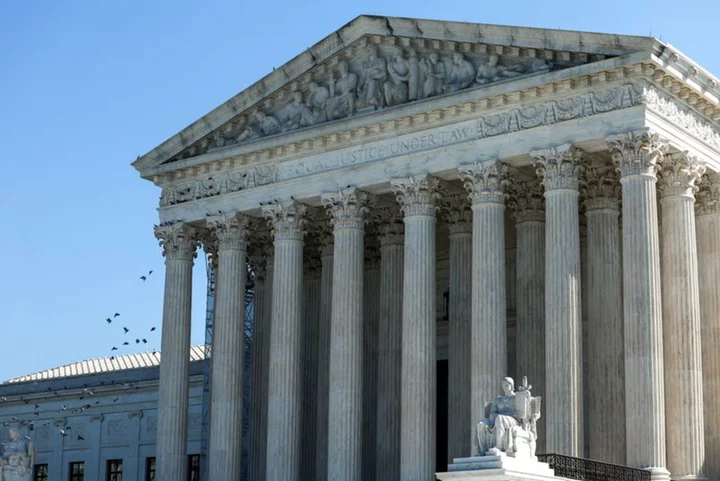By John Kruzel
WASHINGTON The U.S. Supreme Court was set on Wednesday to hear a bid by South Carolina officials to revive a Republican-drawn electoral map faulted by a lower court for moving 30,000 Black residents out of a congressional district - a case that could help decide control of the House of Representatives in the 2024 elections.
At issue is a map adopted last year by the Republican-led state legislature delineating the boundaries of one of South Carolina's seven U.S. House districts.
A panel of three federal judges blocked the map for South Carolina's coastal 1st congressional district, which includes parts of Charleston. The panel in January ruled that the map diminished the clout of Black voters in violation of the U.S. Constitution's 14th and 15th Amendments, which guarantee equal protection under the law and prohibit race-based voting discrimination, the judges found.
A practice called gerrymandering involves the manipulation of electoral district boundaries to marginalize a certain set of voters and increase the influence of others. In this case, the state legislature was accused of racial gerrymandering to reduce the influence of Black voters.
The Republican legislators and other state officials who have appealed to the Supreme Court have argued that the map was designed to secure partisan advantages, a practice that the Supreme Court in 2019 decided was not reviewable by federal courts - unlike racial gerrymandering, which remains illegal.
The new map increased the district's share of white voters while reducing its share of Black voters, which the lower court referred to as "bleaching." The Republicans faulted the judges for finding that the district's composition was motivated primarily by race rather than Republican interests. Black voters tend to favor Democratic candidates.
The eventual ruling by the Supreme Court, which has a 6-3 conservative majority, may determine whether Democrats have a realistic shot to win the district, which is currently represented by Republican Nancy Mace.
The map shifted 30,000 of the 1st district's Black residents into the neighboring 6th congressional district that stretches 125 miles (200 km) inland from Charleston. The 6th district has been held for three decades by Democrat Jim Clyburn, one of the most prominent Black members of Congress. Clyburn's is the only one of South Carolina's House districts held by a Democrat.
Legislative districts across the United States are redrawn to reflect population changes documented in the nationwide census conducted every decade.
With the district's previous boundaries in place, Mace only narrowly defeated an incumbent Democrat in 2020 - by just over 1 percentage point, or 5,400 votes. With the redistricting, Mace won re-election in 2022 by 14 percentage points.
Mace signed a brief urging the justices to preserve the Republican-drawn map.
The parties in the case - the state officials defending the map and Black voters challenging it - have asked the justices to issue a decision by the end of the year, in time for the map to be finalized ahead of the Nov. 5, 2024, congressional elections.
Similar legal cases over electoral maps in Louisiana, Georgia, New York and other states could help determine which party next year emerges with control of the House. The Supreme Court in June ruled against Alabama Republicans in one such case, ordering that state to devise a second majority-Black U.S. House district in a ruling that gave a boost to Democrats. Republicans hold a slim 221-212 House margin.
(Reporting by John Kruzel; Editing by Will Dunham)









